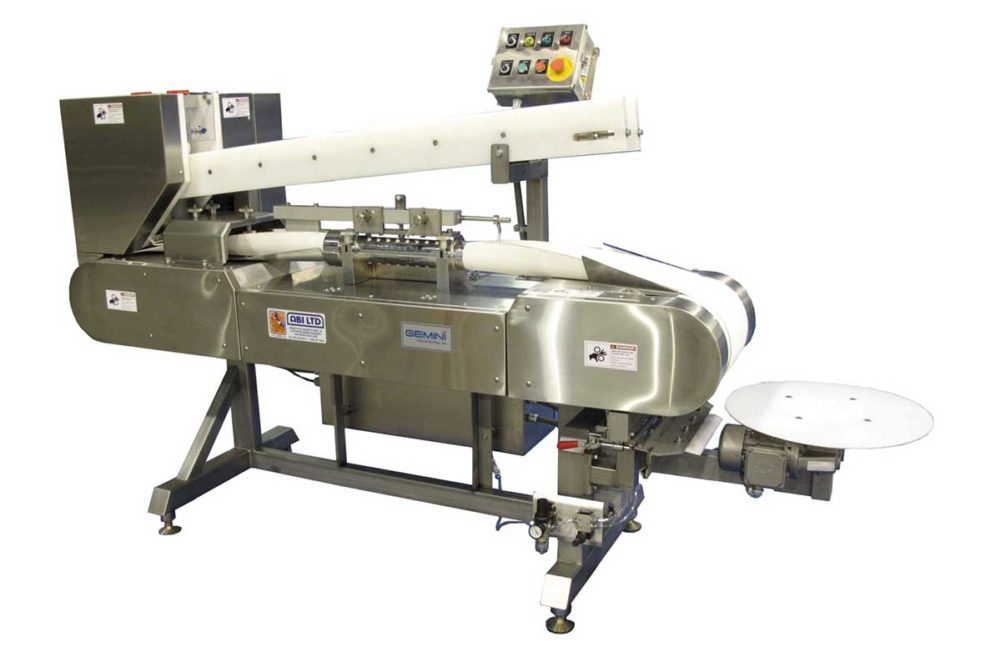With any baked food that is portioned, dividing accuracy and forming technique are essential to creating the correct size and shape of the finished product. Bagels are no exception. This step in the process has an impact on what transpires downstream: proofing, retarding, boiling/steaming and baking.
“The pieces that our dividers create are identical in both weight and shape,” said John Borowski, master baker and bagel specialist, WP Bakery Group USA Winkler division. “This not only helps in forming and boiling but is also beneficial in the baking process and when bagging the product at the end of the line.”
WP Winkler’s WBD-100 Generation III divider has an accuracy of +/- 1% and produces a consistent dough piece within a predetermined target range. The divider is also robust, designed specifically to handle the typically stiff dough.
Bagel dough may be susceptible to changes in flour characteristics as well as temperature changes as it is worked. A theme throughout bagel processing is closely monitoring and adjusting equipment to meet the dough’s needs. Dividing is no different.
“Temperature, shape and weight are critical,” Mr. Borowski explained. “If the dough is warmer, for instance, it will form differently than if it is colder. Since our Winkler WBD-100 Divider produces accurate pieces with minimal processing, not only are the weights accurate and consistent, but the shape of the pieces and the temperature are also constant.”
ABI’s pre-feeding process before the divider ensures consistency. To adapt to changing dough characteristics, the dividers are also equipped with sensors that communicate with the process controller.
“These laser sensors predict changes in dough thickness through the multiple sheeting stages inside the divider and adjust the speed of the corresponding sheeting rollers to minimize variations in the dough thickness,” said Alex Kuperman, chief executive officer, ABI Ltd. “This combination of pre-feeding and precise process control ensures optimum scaling accuracy.”
Without proper forming, however, bakers will end up with misshapen bagels, open rings and different-sized holes. Much of this comes down to the mandrel and forming tube.
“Make sure the mandrel and forming tube are properly sized for the weight of the bagel and the size of the whole being targeted,” said Ken Johnson, president, Gemini Bakery Equipment.
The mandrel, a cylindrical rod around which the bagel is shaped, determines the inside diameter of the product, and the forming tube molds the dough into a ring shape, or toroid, around the mandrel.
[Related reading: Sticky bagels need special care at the oven]
“If the ratio is too small, it will cause the dough to tear and may cause doubles through the molding process,” Mr. Kuperman explained. “A ratio that is too large will result in poorly closed and misshapen bagels, as well as bagels that are not closed at all.”
While mandrel size often corresponds to forming tube, he stressed that the actual ratio will be dependent on dough consistency and needs to be determined for each bagel producer’s specifications.
Forming doesn’t end at the mandrel and forming tube, however. Once the bagel is shaped, it must release properly from the equipment. If that doesn’t happen cleanly, a misshapen product may result.
“The moulding process requires a combination of high-friction surface that also displays good release characteristics,” Mr. Kuperman said. “Over years of extensive research and development, ABI has established a number of belt textures and materials that address these concerns as well as the concerns of strength and durability.”
Dennis Kauffman, product group leader, AMF BakeTech, explained that it can be hard to maintain the bagels’ shape and positions when bakers use peel boards because the process uses many raw dough conveyor transfers. When using rack or continuous ovens, he suggested proofing and baking bagels in moulded pans to maintain their size and shape.
If a transfer does cause some misshaping, a well-placed, shape-correcting roller can make any needed corrections, Mr. Johnson noted.
This article is an excerpt from the February 2021 issue of Baking & Snack. To read the entire feature on bagel processing, click here.





